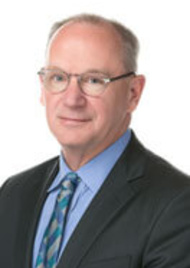By: Jeff Eckel with Ron Pernick

Part of a series of insights from leading smart-grid, clean-energy, and utility experts speaking at gridCONNEXT. Questions asked by Clean Edge managing director, author, and gridCONNEXT co-chair Ron Pernick.
Ron Pernick: Your firm, Hannon Armstrong, was the first real estate investment trust (REIT) focused on investing in clean energy and assets that address and mitigate the effects of climate change. What attracted you to this market opportunity (before many others were even thinking about it)?
Jeff Eckel: Hannon Armstrong has been making investments in clean energy since the 1980s, so we have a long-term view on the investment opportunity. We believe that in a world increasingly defined by climate change, better
Pernick: Hannon Armstrong currently invests around U.S. $1 billion annually in sustainable infrastructure – with many investments that are “behind-the-meter and grid connected.” Can you tell us more about the trends you are seeing as the market matures?
Eckel: We started out categorizing our investments in discrete technology buckets of efficiency, wind, and solar. But the emergence of distributed solar has caused us to focus more on the location of the investment relative to the customer, rather than the specific technology. For example, many energy efficiency investments, typically lighting, heating and cooling assets, now include solar PV. How should we think of that?
In our view, behind-the-meter (“B-T-M”) defines the economics of the investment better than a technology label. Two-thirds of our pipeline is B-T-M as we see three powerful trends – decarbonization, decentralization
We are also seeing significant cost improvements in grid-connected wind and solar that few in the industry anticipated. And when storage is added to the grid-connected assets, the long-standing intermittency issue of renewables is largely addressed.
Pernick: “Climate resilience” is a growing topic of discussion among both public and private stakeholders as the occurrence and magnitude of damaging weather events increases. How do you view resiliency and adaptation as an investment opportunity in the U.S.
Eckel: It is early days for resiliency and adaptation, but we are starting to see communities come to grips with the phenomena of more frequent severe weather events. One example of a resiliency investment is
Pernick: Based on the nature of your investments, you often are involved in public-private partnerships (P3). What are the greatest lessons you’ve learned structuring successful P3 investments?
Eckel: Our clients, the leading engineering and manufacturing companies operating in the US, do the heavy lifting on structuring a value proposition for their respective P3
Pernick: Of the nearly 200 investments made by Hannon Armstrong, are there any that you are particularly proud of in terms of meeting both your environmental and economic goals?
Eckel: A notable investment is the one we made at Marine Corps Recruit Depot Parris Island in South Carolina. Ameresco is our client and they engineered a deep energy retrofit of the base, plus resiliency assets including cogeneration, solar PV, and energy storage that allows the base to be self-reliant should the grid power

